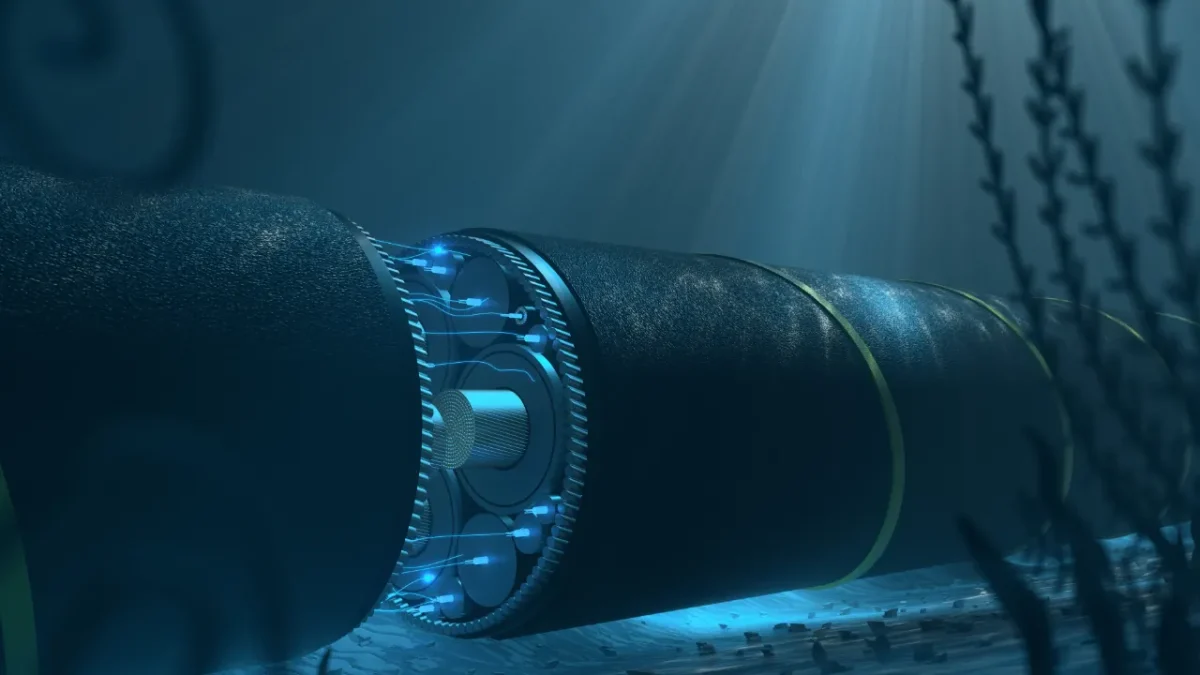DIGITAL LIFE

New undersea cables will feature advanced technology to detect sabotage
The security of global communications is about to take a significant leap forward with new technology that allows undersea internet cables to “listen in” for potential threats. Developed by the company AP Sensing, this innovation uses irregular pulses of light to detect disturbances that could indicate sabotage attempts or accidental damage.
The system is based on the analysis of disturbances in the light pulses traveling through submarine fiber optic cables. These disturbances can be caused by acoustic energy, such as a diver touching the cable or a ship's anchor dragging towards it.
Daniel Gerwig, global sales manager at AP Sensing, explained in a demonstration to the BBC: “When a diver stops and lightly touches the cable, you clearly see the signal. The acoustic energy traveling through the fiber disrupts our signal, and we can measure that disruption.”
This innovative technology offers several advantages:
-Detection of physical contact with the cables
-Identification of temperature changes, which may indicate unearthed sections
-Rough estimation of the size, location and direction of nearby ships
However, there are some limitations:
-Need for listening stations approximately every 100 km
-Detection range generally limited to hundreds of meters
-Variation in detection distance depending on the transmitted acoustic energy.
Context and importance...This innovation comes at a critical time, following several recent incidents of sabotage against submarine internet cables. More than 95% of the world's internet traffic travels through these cables, making them a vulnerable and strategic target.
Many European countries, the European Union and NATO are actively looking for ways to detect attacks in real time. AP Sensing’s technology represents a significant advancement in this effort, offering a solution that can be deployed on existing cables, using “dark” or unused fibers, or free channels on active fibers.
The telecommunications and submarine cable industry is actively responding to these threats. In 2024, the International Advisory Body for Submarine Cable Resilience was launched by the International Telecommunication Union (ITU) and the International Cable Protection Committee (ICPC).
This initiative comes in response to rising geopolitical tensions and the growing threat from groups targeting submarine cables, especially in the Red Sea area.
Geopolitical challenges...One of the main challenges identified is Russia's so-called “ghost fleet”. This fleet is composed of incognito commercial vessels that are apparently engaged in maritime trade, but in fact often carry out reconnaissance, espionage and, in some cases, sabotage of submarine cables.
These vessels are particularly difficult to track due to their complex ownership structures and unclear or unknown insurance.
As threats to undersea cables continue to evolve, technologies like those developed by AP Sensing become increasingly crucial to ensuring the security and stability of global communications. With the world's growing reliance on the internet for virtually every aspect of modern life, protecting this critical infrastructure is more important than ever.
mundophone

No comments:
Post a Comment